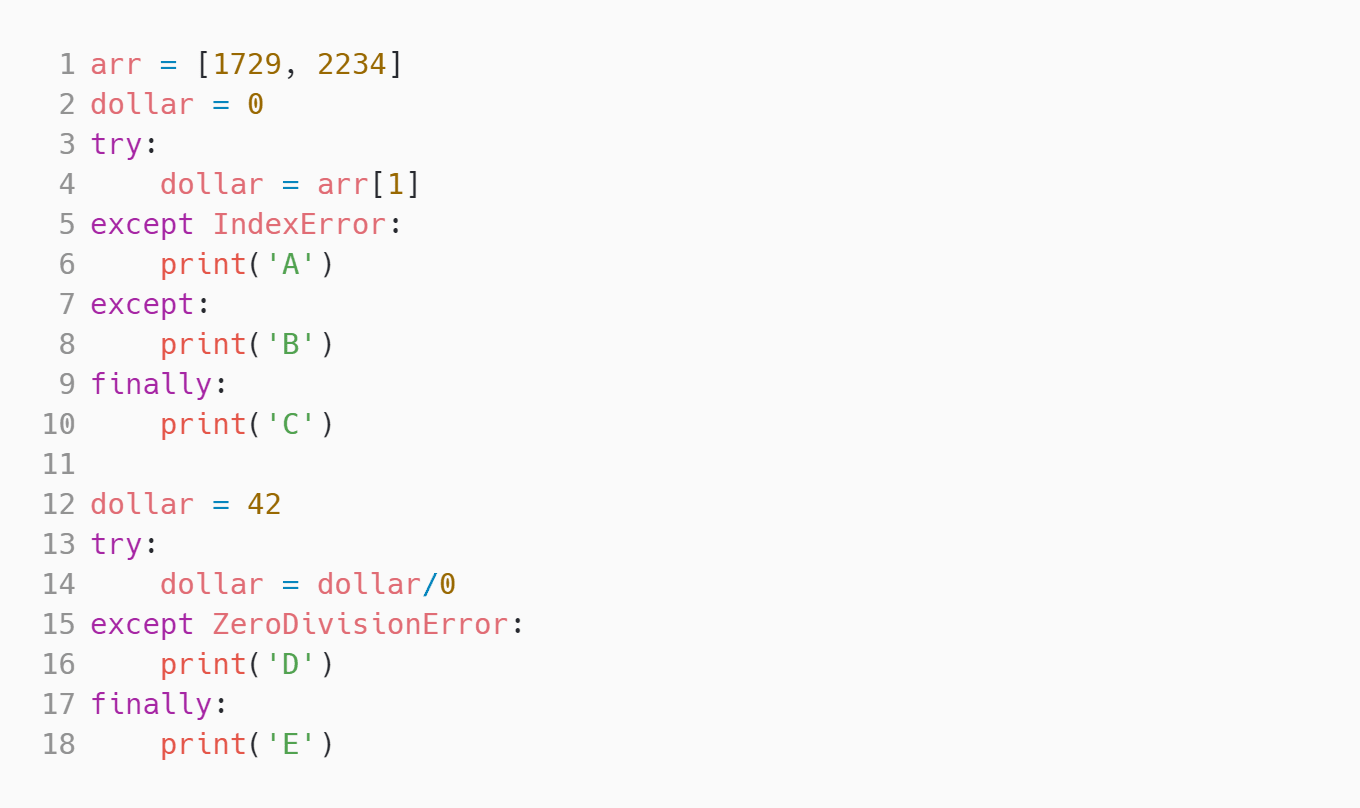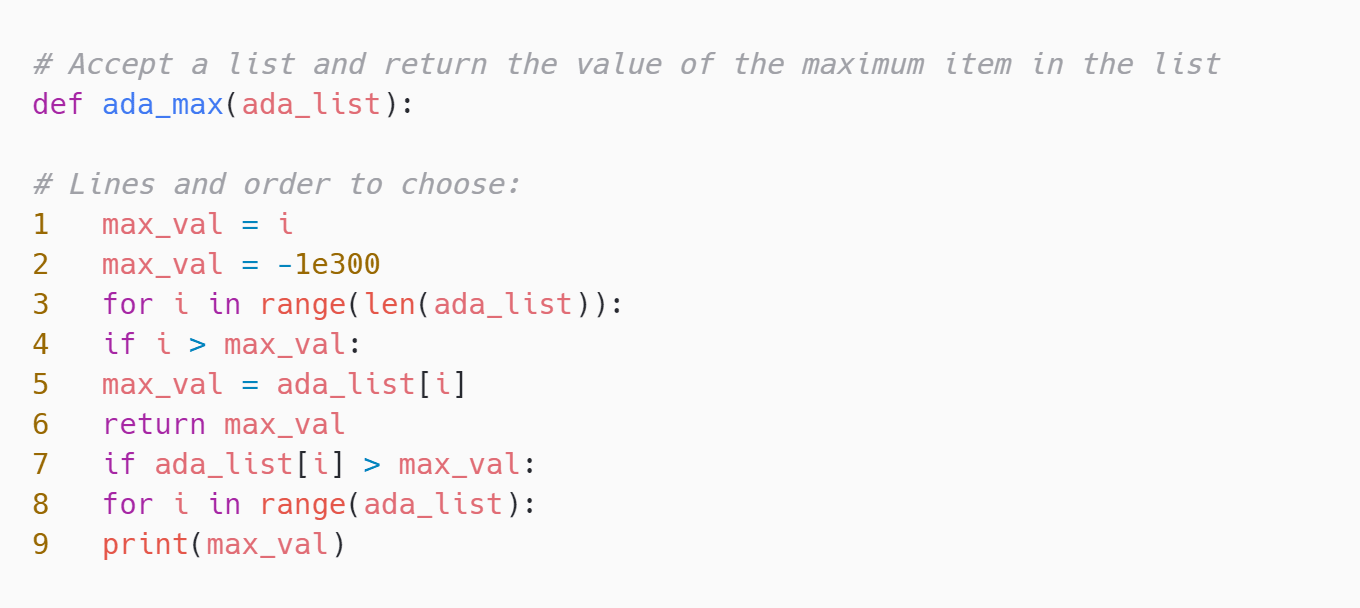Reading and Writing Data: This skill involves the ability to read and write data using the Python Pandas library. It includes tasks such as loading data from various file formats (e.g., CSV, Excel), extracting specific columns or rows, and saving the manipulated data back into files. This skill is important to measure because reading and writing data is a fundamental aspect of data analysis and manipulation workflows, and being proficient in this skill is essential for working with real-world datasets.
Data Manipulation: Data manipulation refers to the process of transforming and modifying data to make it suitable for analysis. It includes tasks such as filtering rows based on certain conditions, changing data types, creating new columns, manipulating strings, and performing mathematical operations on data. This skill should be measured in this test because it is a crucial aspect of data analysis, allowing users to transform raw data into a structured and usable format for further analysis.
Data Analysis: Data analysis involves exploring and making sense of data, identifying patterns, correlations, and trends, and extracting meaningful insights. It includes tasks such as computing summary statistics, calculating frequencies, performing aggregations, and applying statistical functions. Measuring this skill in the test is important as it assesses the candidate's ability to apply various data analysis techniques using the Python Pandas library, thereby determining their proficiency in analyzing and interpreting data.
Data Cleaning and Preprocessing: Data cleaning and preprocessing involves identifying and handling missing or incorrect data, removing duplicates, dealing with outliers, normalizing data, and performing other data cleansing operations. This skill is essential to ensure data integrity and accuracy before conducting any further analysis. Measuring this skill in the test helps evaluate the candidate's ability to clean and preprocess data effectively, which is a critical step in the data analysis process.
Data Visualization: Data visualization refers to representing data in a visual format, such as charts, graphs, and maps, to facilitate understanding and communication of information. It includes tasks such as creating plots, customizing visualizations, adding labels, colors, and legends, and visualizing trends and relationships in data. Measuring this skill in the test provides insight into the candidate's ability to visually represent data using the Python Pandas library, which is important for effective data storytelling and presentation.
Working with Time Series Data: Working with time series data involves handling and analyzing data that is ordered and indexed by time or date. It includes tasks such as time-based indexing, resampling data at different frequencies, calculating rolling statistics, and working with time-related operations. Measuring this skill in the test assesses the candidate's capability to work with time series data using the Python Pandas library, which is crucial in domains such as finance, stock market analysis, and forecasting.
Grouping and Aggregating Data: Grouping and aggregating data involves grouping data by one or more categorical variables and then applying aggregate functions to calculate summary statistics within each group. It includes tasks such as grouping data by specific columns, performing aggregate calculations such as mean, sum, count, and applying custom aggregation functions. Measuring this skill in the test evaluates the candidate's proficiency in grouping and summarizing data efficiently using the Python Pandas library, which is essential for data analysis and generating insights.
Merging and Joining DataFrames: Merging and joining DataFrames involves combining multiple DataFrames based on common columns or indexes, thereby creating a new DataFrame that contains all the information from the merged datasets. It includes tasks such as inner and outer joins, merging on multiple keys, concatenating DataFrames vertically or horizontally, and handling overlapping column names. Measuring this skill in the test assesses the candidate's ability to merge and join DataFrames accurately and efficiently using the Python Pandas library, which is a vital skill for integrating and harmonizing data from different sources.
Handling Missing Data: Handling missing data involves identifying, analyzing, and filling in missing values or deleting rows/columns with missing data. It includes tasks such as detecting missing values, imputing missing values using strategies like mean, median, or interpolation, and removing rows or columns with excessive missing data. Measuring this skill in the test helps evaluate the candidate's ability to handle missing data appropriately using the Python Pandas library, which is crucial to ensure data quality and integrity during the analysis process.
Applying Statistical Functions: Applying statistical functions involves performing statistical calculations and analyses on data, such as computing correlation coefficients, conducting hypothesis tests, measuring central tendency and variability, and implementing statistical models. It includes tasks such as calculating mean, median, mode, variance, standard deviation, and applying inferential statistics methods. Measuring this skill in the test assesses the candidate's proficiency in utilizing statistical functions from the Python Pandas library to derive meaningful insights and conclusions from the data being analyzed.
Reshaping Data: Reshaping data involves transforming the structure of data to suit specific analysis requirements or desired formats. It includes tasks such as pivoting data, melting data, stacking and unstacking data, and transforming wide-format data to long-format or vice versa. Measuring this skill in the test evaluates the candidate's ability to reshape, restructure and organize data efficiently using the Python Pandas library, which is essential for data analysis, modeling, and reporting purposes.




























































